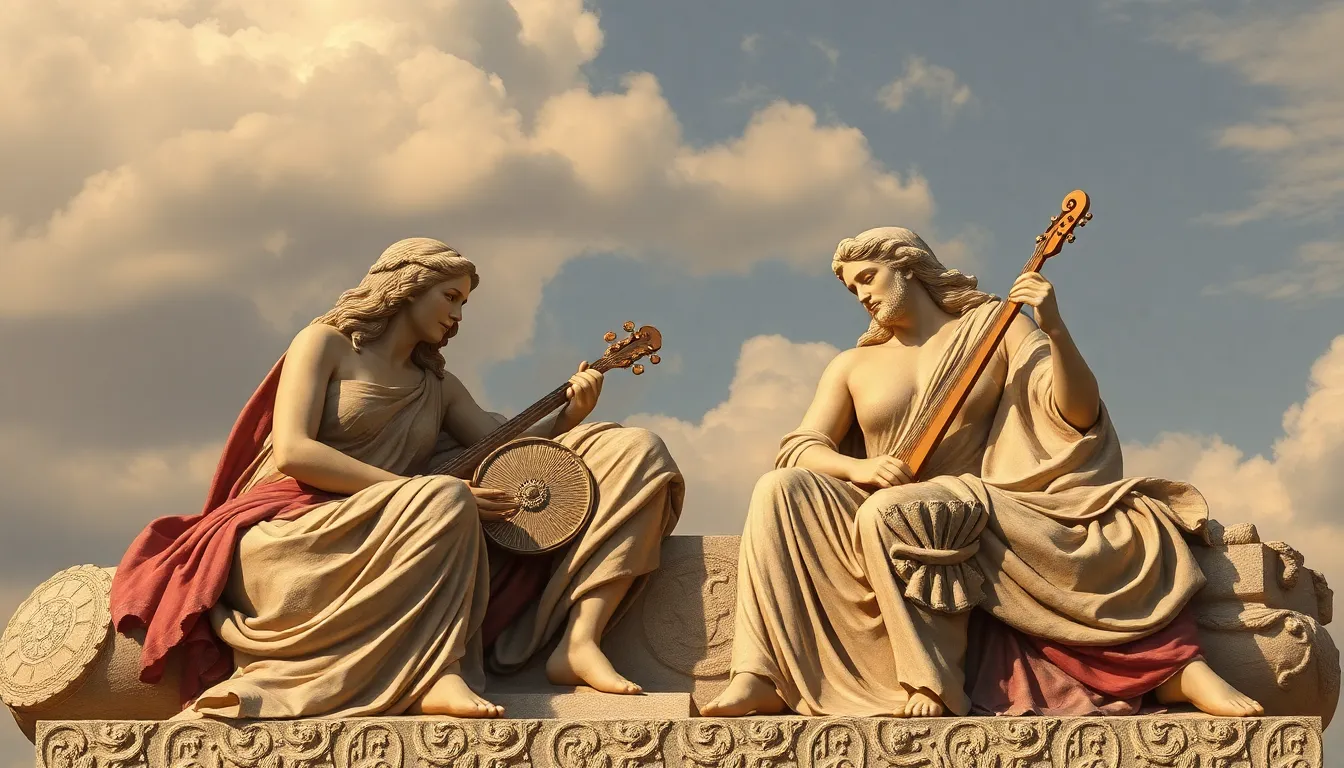The Muses in Music: Their Role in Shaping Musical Traditions
I. Introduction
The Muses, in Greek mythology, are the personifications of the arts and sciences, revered as inspirational goddesses of creativity and knowledge. They were invoked by artists, poets, and musicians for guidance and inspiration in their creative endeavors. The historical significance of the Muses in arts has roots that stretch deep into ancient culture, where they played a pivotal role in shaping artistic traditions.
Among their various forms of influence, music stands out as one of the most profound, with the Muses being intimately connected to its creation and evolution. This article explores the influence of the Muses on musical traditions throughout history, examining their roles in inspiring composers and shaping genres across cultures.
II. The Concept of the Muses in Ancient Culture
The Muses, originally nine in number, were considered the daughters of Zeus and Mnemosyne, the goddess of memory. Each Muse presided over a specific domain of the arts:
- Calliope – Epic poetry
- Clio – History
- Erato – Lyric poetry
- Euterpe – Music
- Melpomene – Tragedy
- Polyhymnia – Sacred poetry
- Terpsichore – Dance
- Thalia – Comedy
- Urania – Astronomy
The role of the Muses extended beyond mere inspiration; they were believed to grant wisdom and skill to those who sought their favor. Euterpe, the Muse of music, specifically embodies the essence of musical creativity. She is often depicted with a lyre, symbolizing her influence over melodies and harmonies.
III. The Muses as Symbols of Inspiration
The psychological and emotional impact of the Muses on composers and musicians cannot be overstated. Many artists have spoken of experiencing a profound connection with their Muse, which fueled their creativity and artistic expression.
Notable composers like Ludwig van Beethoven and Wolfgang Amadeus Mozart often attributed their musical breakthroughs to moments of inspiration that felt divinely guided. These instances illustrate the relationship between the Muses and the creative processes in music, where the act of creation transcends mere technical skill and enters the realm of the sublime.
IV. The Evolution of Musical Traditions Influenced by Muses
The Muses have significantly impacted the development of various musical traditions. In classical music, their influence can be traced through the works of renowned composers who sought to channel the essence of the Muses in their compositions.
Furthermore, the Muses have shaped folk and traditional music across cultures, serving as a bridge between the past and present. For example:
- In many African cultures, music is deeply intertwined with spiritual beliefs, where musicians invoke ancestral spirits akin to the Muses.
- In Indian classical music, the concept of ‘Natyashastra’ reflects the Muses’ influence on performance arts, including music and dance.
Modern interpretations of the Muses can be seen in contemporary music genres, where artists often reference the idea of a Muse to express their creative struggles and triumphs.
V. Muses in Different Musical Cultures Around the World
Exploring the concept of Muses reveals a fascinating tapestry of artistic inspiration across different cultures. In non-Western musical traditions, the idea of Muses often aligns with spiritual and natural elements.
For instance:
- In Japanese culture, the spirit of ‘Kami’ can be seen as a Muse, inspiring various forms of traditional music.
- In Indigenous cultures, songs often honor the land and ancestors, resonating with the concept of divine inspiration.
A comparative analysis shows that while different cultures have unique interpretations of the Muses, the underlying theme of artistic inspiration remains universal. The Muse serves as a symbol that transcends geographical boundaries, embodying the essence of creativity.
VI. The Influence of Muses on Musical Genres and Movements
The role of Muses has been pivotal in the birth and evolution of specific musical genres. For example:
- Romanticism in music was characterized by deep emotional expression, often inspired by the notion of the Muse as a source of passion and creativity.
- Jazz musicians frequently refer to their “Muses” when discussing improvisation and spontaneous creation, highlighting the Muse’s role in the creative process.
Key movements in music history, such as the Baroque and Classical periods, were also influenced by the ideals of the Muses, showcasing how cultural shifts in music often reflect the evolving understanding of inspiration and creativity.
VII. The Legacy of the Muses in Modern Music
The portrayal of Muses in modern lyrics and themes speaks to their enduring legacy. Contemporary artists frequently weave references to Muses into their songs, acknowledging the influence of these mythological figures on their creative journeys.
Today, the ongoing relevance of Muses in music creation remains evident as artists continue to invoke them for inspiration, drawing from the rich tapestry of mythology to express their thoughts and emotions.
VIII. Conclusion
Throughout history, the Muses have profoundly impacted musical traditions, inspiring countless artists and shaping the evolution of genres. Their essence continues to resonate with musicians, serving as a reminder of the deep connection between creativity and the divine.
As we reflect on the enduring power of the Muses in inspiring musicians, it is clear that their influence will remain a vital part of the evolving musical landscape. The future of music will undoubtedly continue to be shaped by the whispers of the Muses, guiding artists in their quest for artistic expression.




